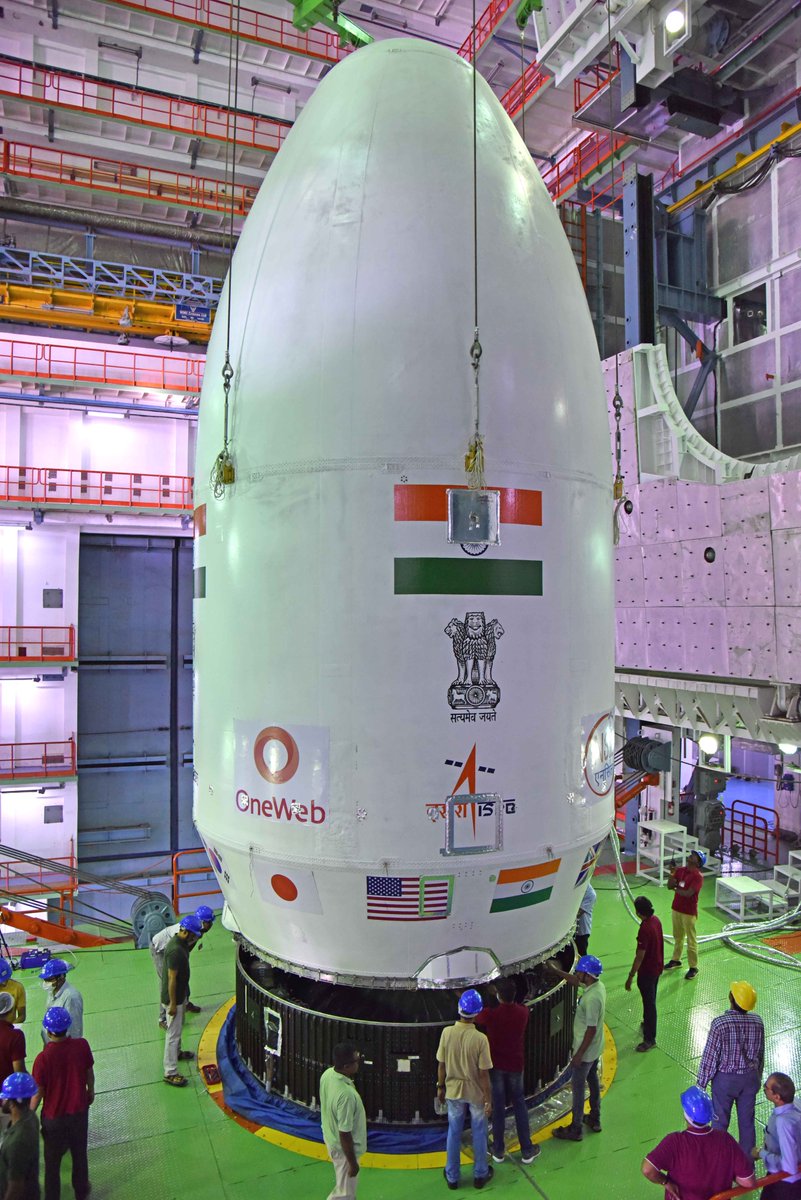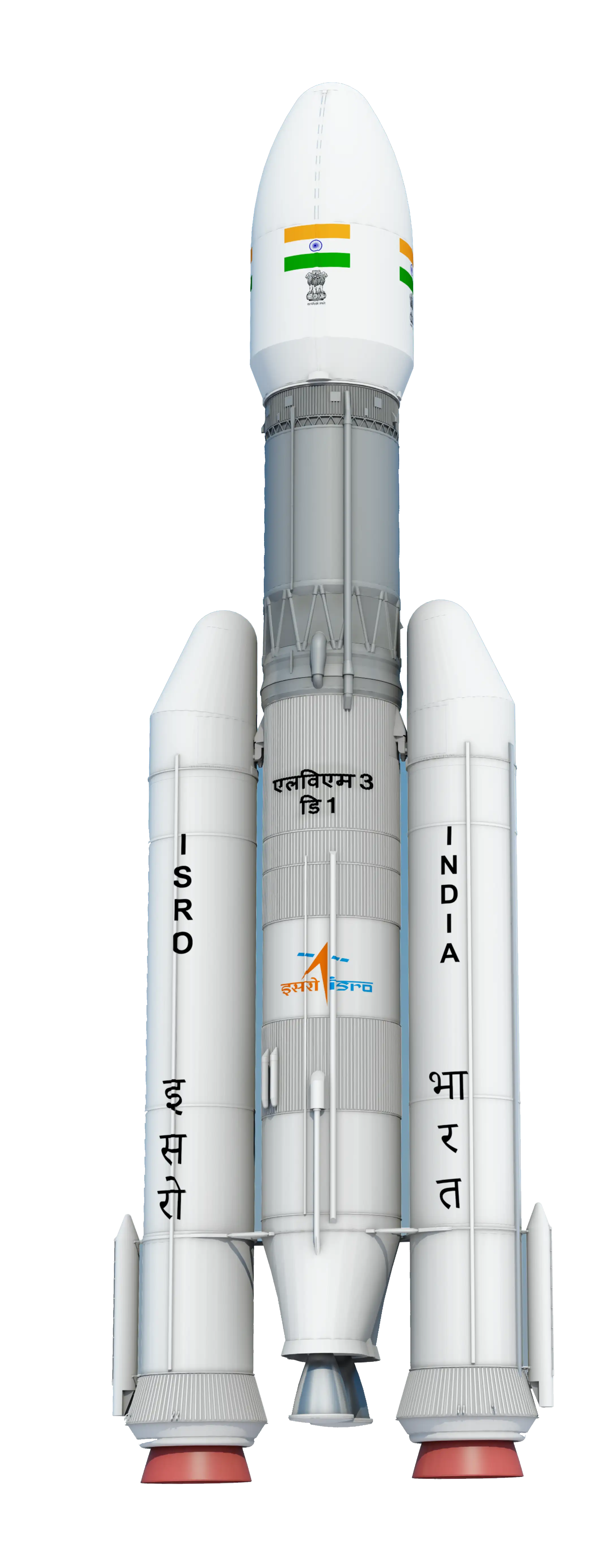Earlier this month, NewSpace India Limited (NSIL), a CPSE under the Department of Space and the commercial arm of the Indian Space Research Organisation (ISRO), has signed two launch service contracts with M/s Network Access Associated Limited (M/s OneWeb), United Kingdom, for launching OneWeb LEO Broadband Communication Satellites on-board ISRO’s heaviest launcher LVM3.

The heavy lift launcher GSLV MkIII (alias LVM3) is intended to enhance the GTO capability to 4000 kg and is currently under development. It is first LVM3 dedicated commercial launch on demand through NSIL. This contract with M/s OneWeb is a historic milestone for NSIL and ISRO, as LVM3, is making its entry into the Global commercial launch service market.
OneWeb is a global communications network, powered from space, enabling connectivity for governments, businesses, and communities. It is implementing a constellation of Low Earth Orbit satellites.India’s Bharti serves as a major investor and shareholder in OneWeb.
As part of the Contract, 36 satellites will be placed into orbit by one LVM3, from Satish Dhawan Space Centre.
GSLV Mark III/LVM3
The Geosynchronous Satellite Launch Vehicle Mark III (GSLV Mk III), also referred to as the Launch Vehicle Mark 3 (LVM3), is a three-stage medium-lift launch vehicle developed by the Indian Space Research Organisation (ISRO).
Primarily designed to launch communication satellites into geostationary orbit, it is also due to launch crewed missions under the Indian Human Spaceflight Programme. GSLV Mk III has a higher payload capacity than it’s predecessor, GSLV Mk II.
 The GSLV Mk III has launched CARE, India's space capsule recovery experiment module, Chandrayaan-2, India's second lunar mission, and will be used to carry Gaganyaan, the first crewed mission under Indian Human Spaceflight Programme. In October 2021, UK-based global communication satellite provider OneWeb entered into an agreement with ISRO to launch OneWeb satellites aboard the GSLV Mk III along with the PSLV, due to the launch services from Roscosmos being cut off, caused by the Russian Invasion of Ukraine.
The GSLV Mk III has launched CARE, India's space capsule recovery experiment module, Chandrayaan-2, India's second lunar mission, and will be used to carry Gaganyaan, the first crewed mission under Indian Human Spaceflight Programme. In October 2021, UK-based global communication satellite provider OneWeb entered into an agreement with ISRO to launch OneWeb satellites aboard the GSLV Mk III along with the PSLV, due to the launch services from Roscosmos being cut off, caused by the Russian Invasion of Ukraine.
The first stage consists of two S200 solid motors, also known as Large Solid Boosters (LSB) attached to the core stage. Each booster is 3.2 metres (10 ft) wide, 25 metres (82 ft) long, and carries 207 tonnes (456,000 lb) of hydroxyl-terminated polybutadiene (HTPB) based propellant in three segments with casings made out of M250 maraging steel. It is the largest solid-fuel booster after the Space Shuttle SRBs and Ariane 5 SRBs.
The second stage, designated L110, is a liquid-fueled stage that is 21 metres (69 ft) tall and 4 metres (13 ft) wide, and contains 110 metric tons (240,000 lb) of unsymmetrical dimethylhydrazine (UDMH) and nitrogen tetroxide (N2O4). It is powered by two Vikas 2 engines, each generating 766 kilonewtons (172,000 lbf) thrust, giving a total thrust of 1,532 kilonewtons (344,000 lbf).
The cryogenic upper stage, designated C25, is 4 metres (13 ft) in diameter and 13.5 metres (44 ft) long, and contains 28 metric tons (62,000 lb) of propellant LOX and LH2, pressurized by helium stored in submerged bottles. More about GLSV Mk III
OneWeb OneWeb is a global communications network powered by a constellation of 648 low Earth orbit (LEO) satellites. Headquartered in London, OneWeb enables high-speed, low latency connectivity for governments, businesses, and communities everywhere around the world. A digital divide persists, with three billion people around the world denied access to reliable terrestrial infrastructure. Going digital is a stepchange that divides many more, on the basis of affordability, speed, reliability, and digital literacy. Rural or hard to reach communities especially cannot access the broadband connectivity (min 25Mbps) that others rely on for interactive, simultaneous communications at work, at school, for health, or for home. “OneWeb has a strong social purpose to improve the world’s access to information. It has great talent, a compelling commercial opportunity, and is supported by committed and knowledgeable owners and investors.”
Courtesy: IRSO




Leave a Reply